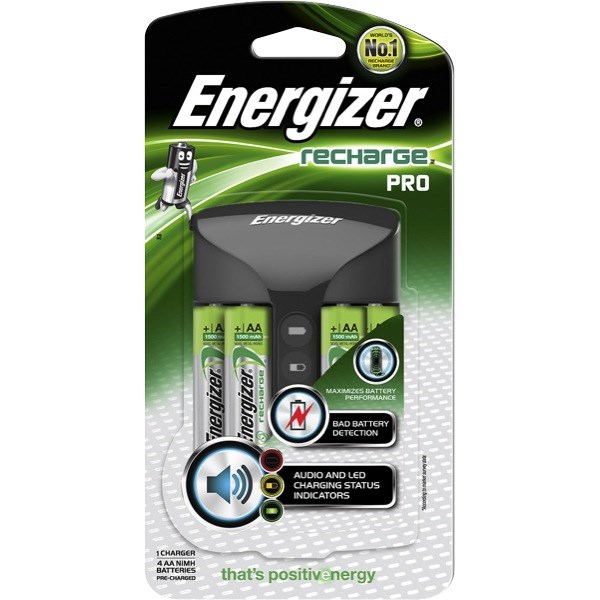

Tiny lights next to each of the 16 individually charging slots turn red when the corresponding battery is charging or if there’s an error, and turn green when it’s fully charged. On the positive side, this charger is relatively compact and sleek-looking, and we like its flying saucer–like shape. With a listed charge-rate range of 300–400 mA, it’s less than ideal for charging AA and AAA batteries (which need 1,000 mA and 500 mA, respectively, to charge optimally). Even when these ports were not in use, our batteries charged so slowly in testing as to make the charger impractical. It has two built-in USB-A output ports, so you can charge a phone and another small device simultaneously, but they’re so low-current that your devices will charge at a snail’s pace-especially if you’re charging batteries at the same time. The EBL FY-1602 is the best 16-slot battery charger we’ve found, but we still don’t think it’s worth buying. We took these factors into consideration as we tested-and spent lots of quality time with-all 14 chargers. They should also be simple and intuitive to use. Look and feel: Ideally, we think rechargeable battery chargers should be compact and unobtrusive, since they’re commonly used in high-traffic areas like your living room, office, or bedroom.Extra features: We considered any extra features, such as a USB port or display screen, and noted whether they made the charger easier to use.We set them to discharge at a rate of 1,000 mA per hour until they died and then recorded the time elapsed and capacity (mAh) measured by the Advanced Battery Charger as the batteries went from fully charged to fully dead. Capacity: After fully charging each pair of batteries in their corresponding chargers, we stuck them into a Powerex Maha Advanced Battery Charger.We wanted to confirm that each charger could charge a single battery at a time, since some (especially older) models can charge batteries only in pairs.

We inserted a single battery into each charger and waited to see whether it began to charge.

Auto shutoff: We made sure chargers have a mechanism to automatically cut off power after the batteries are done charging and when no batteries are inserted.Individual charging: We ruled out chargers that charge batteries only in pairs, since we think it’s important to have the flexibility to charge just one battery or other odd numbers.We think most people will be set with a four-slot charger, and we preferred each eight- or 16-slot charger to be as compact and unobtrusive as possible. No more than 16 charging slots: The size of your charger will depend partly on how many batteries you use.If those chargers can also handle rarer sizes, the more the merrier. AA and AAA compatibility: We considered only chargers that can charge both AA and AAA batteries, since they are most commonly found in household devices.We did not require each model to have lithium-ion (Li-ion) rechargeable battery compatibility, though we gave preference to chargers that work with both types. NiMH (nickel metal hydride) compatibility: We made sure the charger was compatible with NiMH batteries, which generally have higher capacity ratings and more reliability than other common types of rechargeable batteries.


 0 kommentar(er)
0 kommentar(er)
